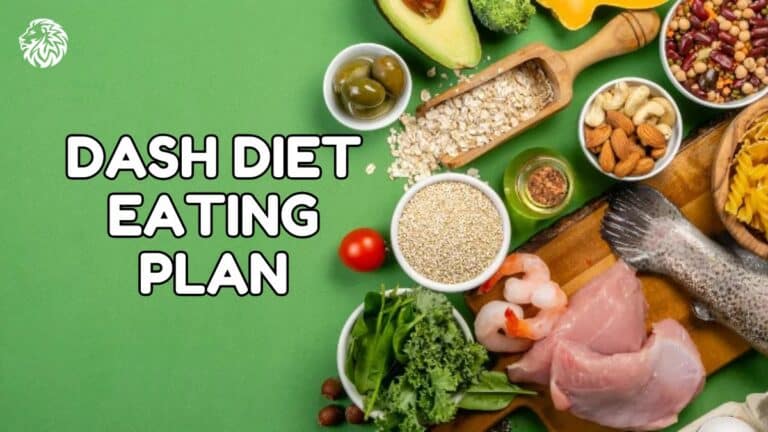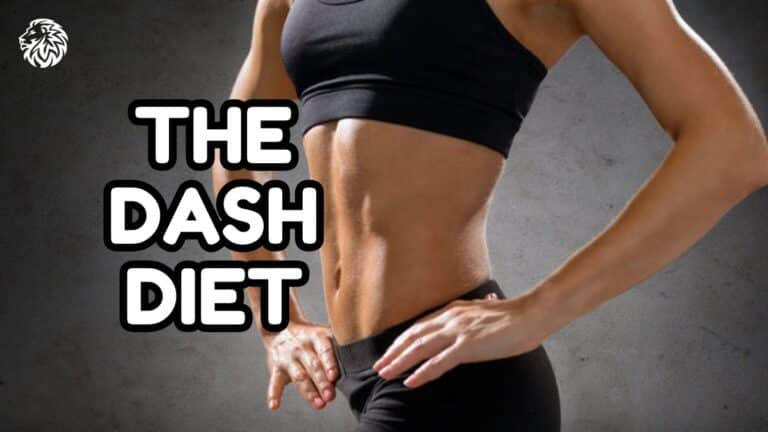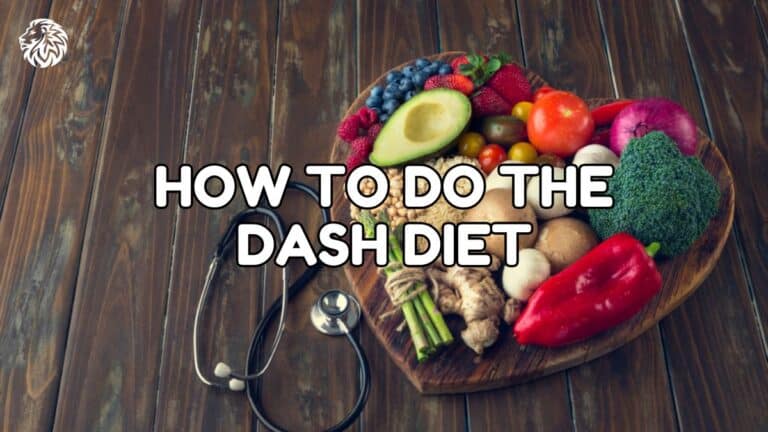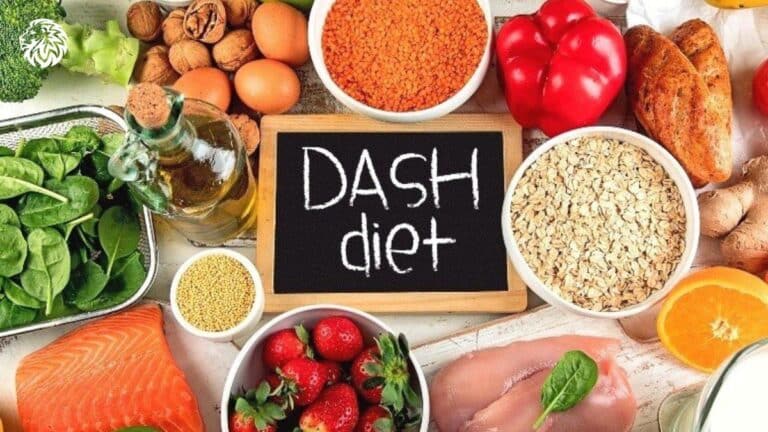When it comes to shedding pounds and improving your health, there are countless diets to choose from. But one that stands out, especially for those who want to improve their overall heart health, is the DASH diet. While it was originally designed to lower blood pressure, many people wonder how fast they can lose weight on a DASH diet. In this post, we’ll dive deep into what the DASH diet is, how it works for weight loss, and what you can expect when it comes to dropping those pounds.
What is the DASH Diet?
The DASH (Dietary Approaches to Stop Hypertension) diet is primarily focused on heart health and reducing high blood pressure, also known as hypertension. Developed by the National Institutes of Health (NIH), this diet encourages eating nutrient-dense foods while limiting sodium, added sugars, and saturated fats.
The core components of the DASH diet include:
- Fruits and vegetables: Rich in vitamins, minerals, and fiber
- Whole grains: Such as brown rice, whole-wheat pasta, and oats
- Lean proteins: Like chicken, fish, and plant-based proteins such as beans and legumes
- Low-fat or fat-free dairy products: To reduce saturated fats
- Nuts, seeds, and legumes: As healthy sources of fat and protein
The diet also emphasizes limiting sodium intake, as well as cutting back on processed foods, sweets, sugary beverages, and red meats.
While this diet was initially designed for blood pressure control, it’s now recognized for its ability to promote weight loss when followed properly. Let’s explore how it does that.
How the DASH Diet Promotes Weight Loss
The DASH diet is not a “weight-loss” diet in the traditional sense, but it can be very effective for those looking to lose weight. Here’s how it works:
- Calorie Reduction: The DASH diet is rich in whole foods like fruits, vegetables, and whole grains, which are naturally lower in calories than processed foods. When you fill your plate with nutrient-dense options, you’re more likely to eat fewer calories overall, which can lead to weight loss.
- Increased Satiety: Foods high in fiber, such as fruits, vegetables, and whole grains, tend to keep you fuller for longer. This helps curb hunger and reduce the temptation to snack on unhealthy foods between meals.
- Lower Sodium Intake: Reducing sodium not only helps with blood pressure but can also reduce bloating caused by water retention. This can make you feel lighter and may result in a quick initial drop in weight from shedding excess water.
- Balanced Macronutrients: By focusing on lean proteins and healthy fats, the DASH diet provides a balanced intake of macronutrients, which supports a healthy metabolism. Unlike fad diets that restrict entire food groups (like low-carb or low-fat diets), DASH encourages a balanced approach, ensuring you get the nutrients you need without overeating.
- Reduction in Processed Foods: Many processed foods are packed with hidden sugars and unhealthy fats that contribute to weight gain. By eliminating or significantly reducing these from your diet, you’re likely to see weight loss progress more steadily.
How Fast Can You Lose Weight on the DASH Diet?
The speed at which you lose weight on the DASH diet depends on several factors, including your starting weight, activity level, and how closely you adhere to the diet. That being said, let’s break down what you can generally expect.
1. Initial Weight Loss: The First Few Weeks
In the first week or two of starting the DASH diet, many people experience rapid weight loss, but it’s important to note that much of this is water weight. This happens because the diet significantly reduces sodium intake, which helps the body release excess water that was previously retained due to high-sodium foods.
In these early weeks, you might lose anywhere from 1 to 5 pounds. While this can feel motivating, keep in mind that the initial drop will slow down as your body adjusts to the new eating habits.
2. Sustained Weight Loss: Weeks 3-12
Once your body gets past the initial phase of water loss, weight loss continues at a more steady and healthy pace. At this point, the focus is on fat loss rather than just shedding water weight.
With consistent adherence to the DASH diet and regular physical activity, you can expect to lose around 1 to 2 pounds per week. This is the rate of weight loss most health professionals consider healthy and sustainable. Losing weight too quickly can often lead to muscle loss or nutrient deficiencies, neither of which are ideal for long-term health.
3. Long-Term Weight Loss: 3 Months and Beyond
After following the DASH diet for a few months, your body will settle into a rhythm, and you’ll likely notice more significant changes in how you feel and look. Many people report losing anywhere from 10 to 30 pounds over the course of 3 to 6 months, depending on their starting weight and level of physical activity.
One of the benefits of the DASH diet is that it’s not designed to be a short-term solution. Because it promotes a healthy, balanced approach to eating, it can be maintained over the long term, helping to keep the weight off and improve overall health.
Factors That Influence Weight Loss on the DASH Diet
While the DASH diet is designed to promote health and potentially lead to weight loss, there are some key factors that will influence how quickly you’ll see results.
- Starting Weight: Individuals who have more weight to lose will often see faster weight loss in the beginning compared to those who are closer to their goal weight.
- Physical Activity: While the DASH diet itself can help with weight loss, combining it with regular exercise will significantly improve your results. Cardiovascular exercise, strength training, and even just increasing daily activity (like walking more) can enhance fat loss and improve muscle tone.
- Portion Control: Even though the foods in the DASH diet are healthy, it’s still possible to overeat. Paying attention to portion sizes is key to staying within a calorie deficit, which is essential for weight loss.
- Consistency: As with any diet, consistency is critical. Following the DASH guidelines most of the time (while allowing for the occasional indulgence) will yield better long-term results than going on and off the diet.
Tips to Maximize Weight Loss on the DASH Diet
If you want to accelerate your weight loss results while following the DASH diet, here are a few tips to help you stay on track:
- Track Your Food Intake: Keeping a food diary or using a mobile app to track your meals can help you stay mindful of your portion sizes and ensure you’re not overeating.
- Stay Hydrated: Drinking plenty of water can help with weight loss, as it keeps you full, aids in digestion, and reduces bloating.
- Focus on Fiber: Foods that are high in fiber, such as fruits, vegetables, and whole grains, not only keep you full but also aid in digestion and help control blood sugar levels, both of which are important for weight loss.
- Include Exercise: Try to incorporate at least 150 minutes of moderate exercise each week. Even walking or light aerobic exercise can make a big difference in your overall calorie burn.
- Limit Added Sugars: Even though the DASH diet is flexible, cutting back on sugary snacks, drinks, and desserts can help you achieve faster weight loss.
Final Thoughts: Is the DASH Diet Right for You?
The DASH diet is not just about weight loss; it’s about improving your overall health. While weight loss can be a wonderful benefit, it’s important to recognize that the primary focus of this diet is reducing blood pressure, lowering cholesterol levels, and improving heart health. That said, the combination of whole, nutrient-dense foods and calorie control can help you lose weight at a safe and sustainable rate of 1-2 pounds per week.
The DASH diet is particularly effective for those who are looking for a long-term solution rather than a quick fix. If you’re consistent with your eating habits and combine the diet with regular physical activity, you’re likely to see noticeable changes in both your weight and overall well-being.
In the end, the DASH diet offers a balanced approach that doesn’t require cutting out entire food groups or following strict rules, making it one of the most practical and sustainable diets available today. Whether you’re looking to lose weight quickly or just want to feel healthier, the DASH diet might be the perfect choice for you.
References
- Blumenthal, J. A., Babyak, M. A., Hinderliter, A., Watkins, L. L., Craighead, L., Lin, P. H., … & Sherwood, A. (2010). Effects of the DASH diet alone and in combination with exercise and weight loss on blood pressure and cardiovascular biomarkers in men and women with high blood pressure: The ENCORE study. Archives of Internal Medicine, 170(2), 126-135. https://pubmed.ncbi.nlm.nih.gov/26990451/
- Minder, R. (2023, July 5). DASH diet for weight loss: What you need to know. Live Science. https://www.livescience.com/dash-diet-for-weight-loss
- Gunnars, K. (2023, May 24). The DASH diet: A complete overview and beginner’s guide. Healthline. https://www.healthline.com/nutrition/dash-diet
- Svetkey, L. P., Sacks, F. M., Obarzanek, E., Vollmer, W. M., Appel, L. J., Lin, P. H., … & Windhauser, M. M. (1999). The DASH diet, sodium intake, and blood pressure trial (DASH-sodium): Rationale and design. Journal of Clinical Hypertension, 2(6), 426-435. https://pubmed.ncbi.nlm.nih.gov/20101007/







